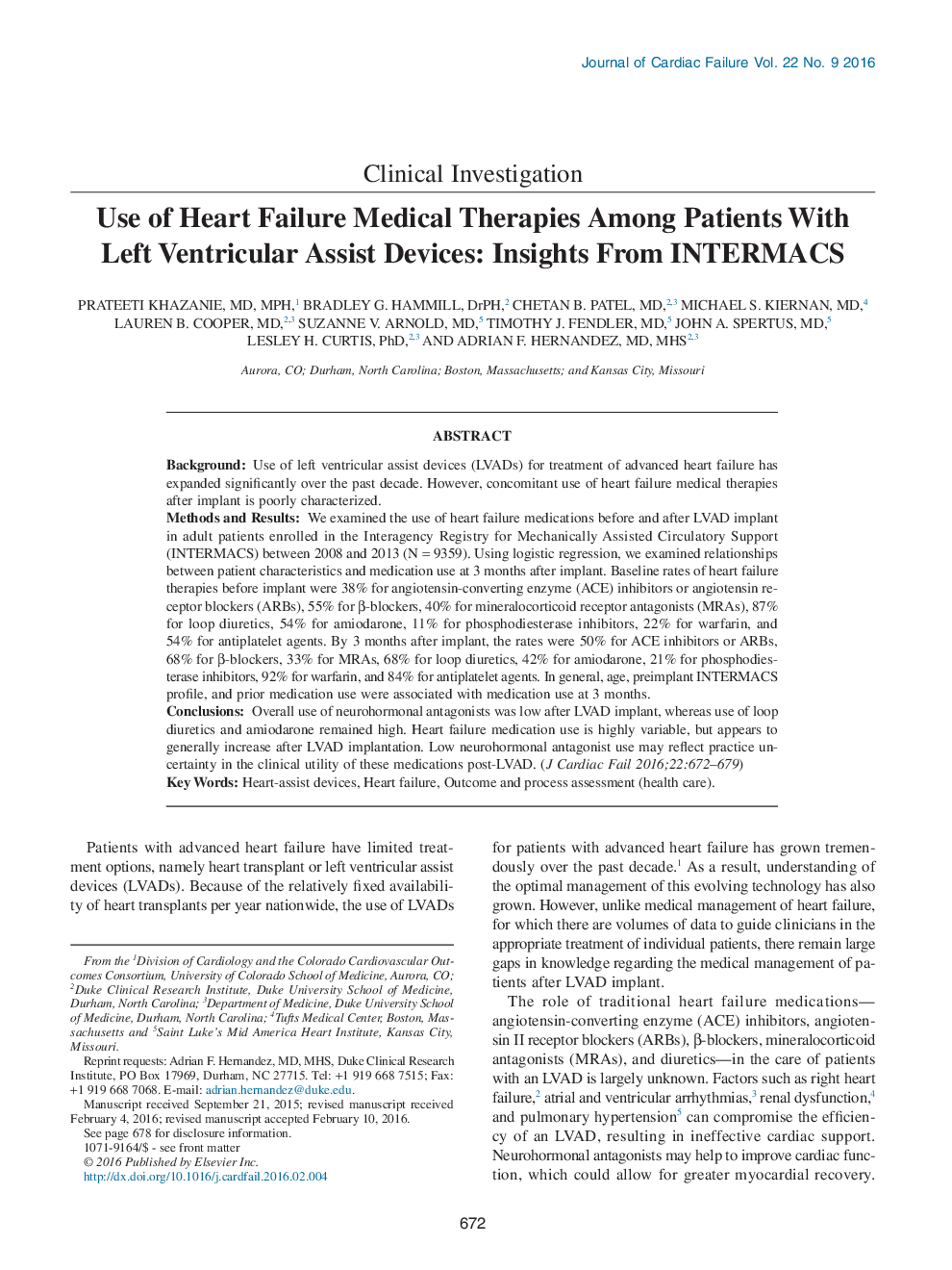| کد مقاله | کد نشریه | سال انتشار | مقاله انگلیسی | نسخه تمام متن |
|---|---|---|---|---|
| 2958252 | 1405927 | 2016 | 8 صفحه PDF | دانلود رایگان |

• Use of heart failure medical therapies is poorly characterized after left ventricular assist device (LVAD) implantation.
• In this analysis of a large, multicenter LVAD registry, we found that use of neurohormonal antagonists was low after LVAD implant, but that use of loop diuretics and amiodarone remained high.
• Future studies should examine associations of heart failure medication use post-LVAD implant in terms of mortality, readmission, and quality of life so that optimal medical therapy can be better understood in this population.
BackgroundUse of left ventricular assist devices (LVADs) for treatment of advanced heart failure has expanded significantly over the past decade. However, concomitant use of heart failure medical therapies after implant is poorly characterized.Methods and ResultsWe examined the use of heart failure medications before and after LVAD implant in adult patients enrolled in the Interagency Registry for Mechanically Assisted Circulatory Support (INTERMACS) between 2008 and 2013 (N = 9359). Using logistic regression, we examined relationships between patient characteristics and medication use at 3 months after implant. Baseline rates of heart failure therapies before implant were 38% for angiotensin-converting enzyme (ACE) inhibitors or angiotensin receptor blockers (ARBs), 55% for β-blockers, 40% for mineralocorticoid receptor antagonists (MRAs), 87% for loop diuretics, 54% for amiodarone, 11% for phosphodiesterase inhibitors, 22% for warfarin, and 54% for antiplatelet agents. By 3 months after implant, the rates were 50% for ACE inhibitors or ARBs, 68% for β-blockers, 33% for MRAs, 68% for loop diuretics, 42% for amiodarone, 21% for phosphodiesterase inhibitors, 92% for warfarin, and 84% for antiplatelet agents. In general, age, preimplant INTERMACS profile, and prior medication use were associated with medication use at 3 months.ConclusionsOverall use of neurohormonal antagonists was low after LVAD implant, whereas use of loop diuretics and amiodarone remained high. Heart failure medication use is highly variable, but appears to generally increase after LVAD implantation. Low neurohormonal antagonist use may reflect practice uncertainty in the clinical utility of these medications post-LVAD.
Journal: Journal of Cardiac Failure - Volume 22, Issue 9, September 2016, Pages 672–679